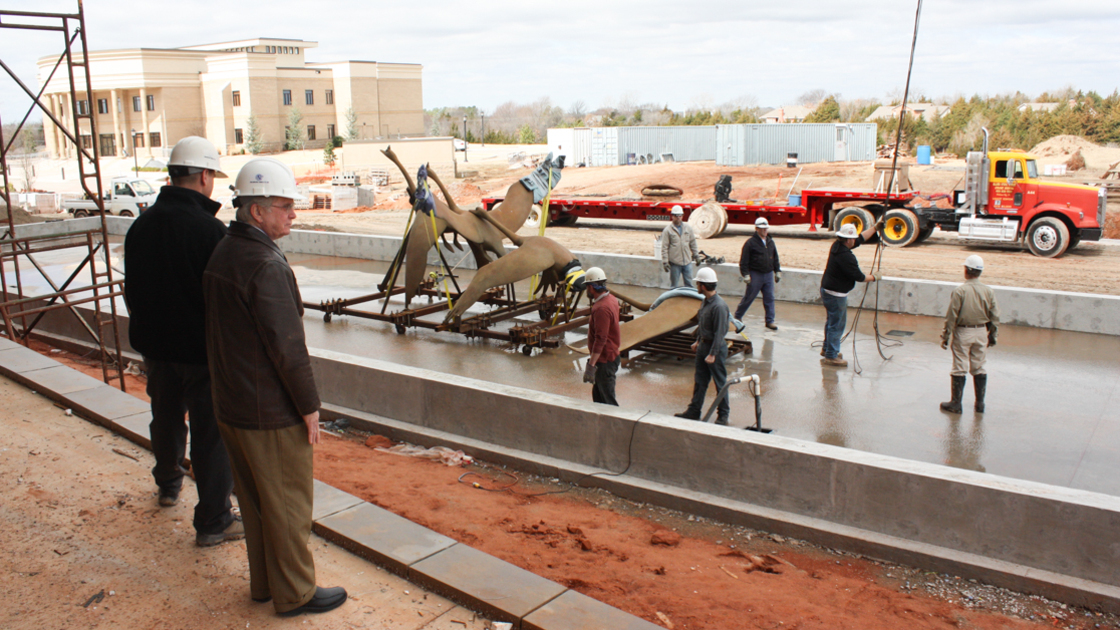On March 9, Pastor General Gerald Flurry was on site personally to witness a the installation of the Swans in Flight sculpture in front of Armstrong Auditorium.
The sound of diesel motors, hydraulic pistons, winches, saws and voices brought the Armstrong Auditorium work site to life that Tuesday morning, just before the day’s most important piece of equipment arrived: a 100-ton hydraulic truck crane. The crane would make possible the auditorium’s interior and exterior centerpieces: three crystal chandeliers and Swans in Flight, a sculpture by Sir David Wynne.
As the crane began hoisting equipment to the roof of the auditorium, the work site quickly became the center of attention among workers on the site and in the adjacent pcg Hall of Administration offices. By 10 a.m., the crew had handily overcome the Oklahoma wind and set the hoist apparatus that will be used to secure three important parts of the Armstrong Auditorium lobby: two 10-foot side chandeliers and one 12-foot center chandelier. The work was carried out under the supervision of a representative of the Wisconsin lighting company that manufactured the hoists, who flew to Oklahoma for the project.
Then it was time for the swans to nest in their permanent home. The crew repositioned the crane near the special sculpture’s storage location and began to secure lifting slings and straps to the birds.
The Swans in Flight sculpture, commissioned by Herbert Armstrong, was created by renowned British sculptor Sir David Wynne to depict the five stages of a swan in flight. Mr. Flurry authorized the purchase of the sculpture in April 2009. The sculpture was disassembled at the former Ambassador College campus in Big Sandy, Tex., on August 11 and transported to the Crucible Foundry in Norman, Okla. After repairing the sculpture and applying a refinished patina, the foundry delivered the birds to the campus in January, where they awaited installation.
The crane operator relocated four of the birds, the heaviest of which weighs approximately 1,600 pounds. After workers from the foundry secured them, the crane again swung back for the final time. By this point, word had spread throughout the campus, and office workers, landscapers and students had all gathered to see the flight of the final bird.
At approximately 2:30 p.m., the crane lifted the final stage of the sculpture, the swan with its wings in an upstroke, overhead and into the top position of the installation, about 12 feet off the ground. Church employees and students overlooking the work applauded as the foundry workers bolted the figure into its new home.
As he waited for the foundry workers and his crew to unsling the bird, crane operator Rick Church commented about the sculpture. Mr. Church, who has worked cranes for 15 years throughout Oklahoma and Texas, said he looked forward to seeing the finished product, which will feature a 120-foot reflecting pool and water jets spraying toward the birds, simulating motion. “I’ve seen a lot of fountains—I’ve set a lot of fountains,” he said over the growl of the crane’s idling diesel engine. “But you’ve got something real special here. This is rare.”
The Swans in Flight sculpture will be unveiled by Sir David at Armstrong Auditorium’s official grand opening ceremony later this year.
